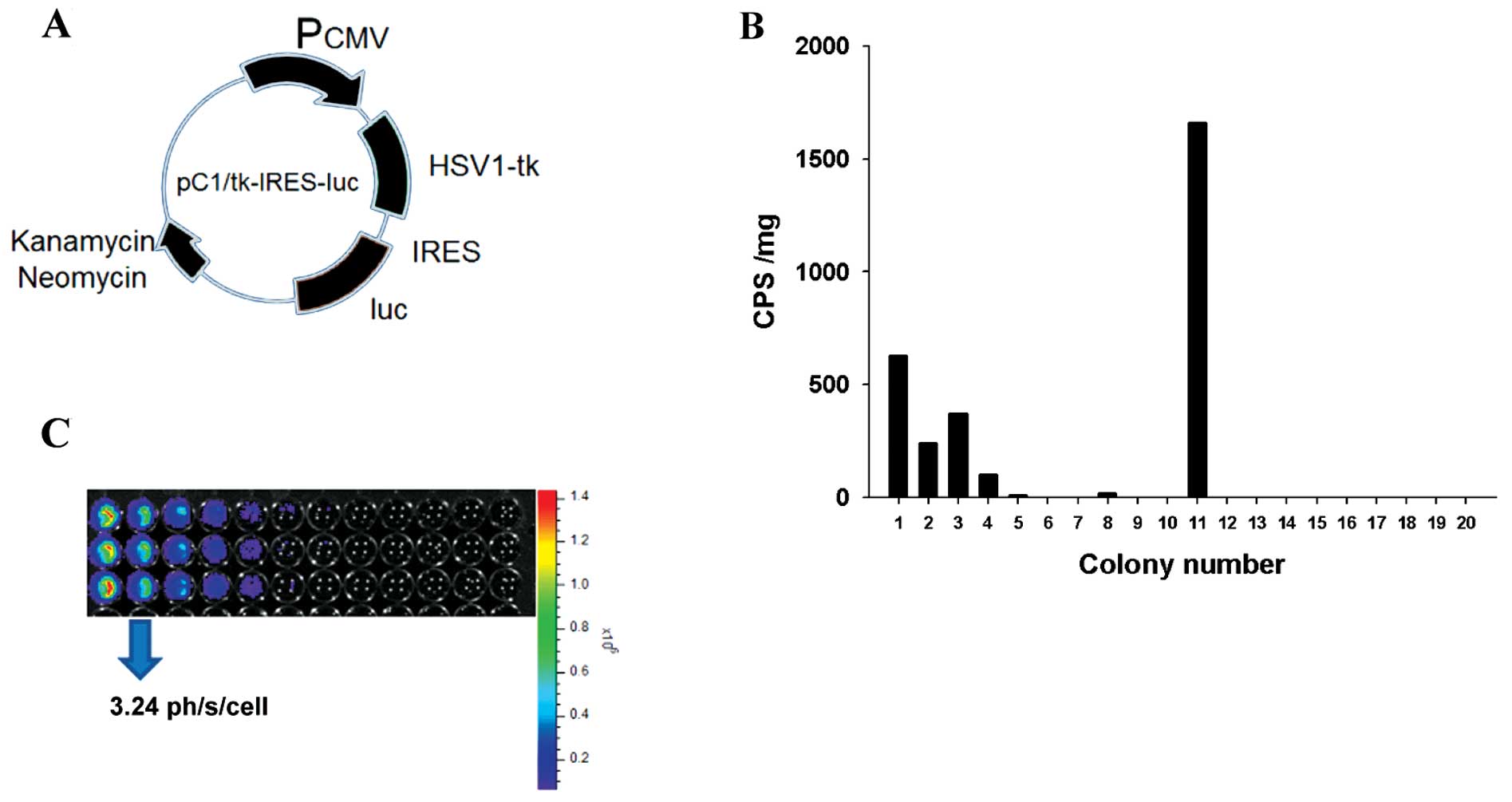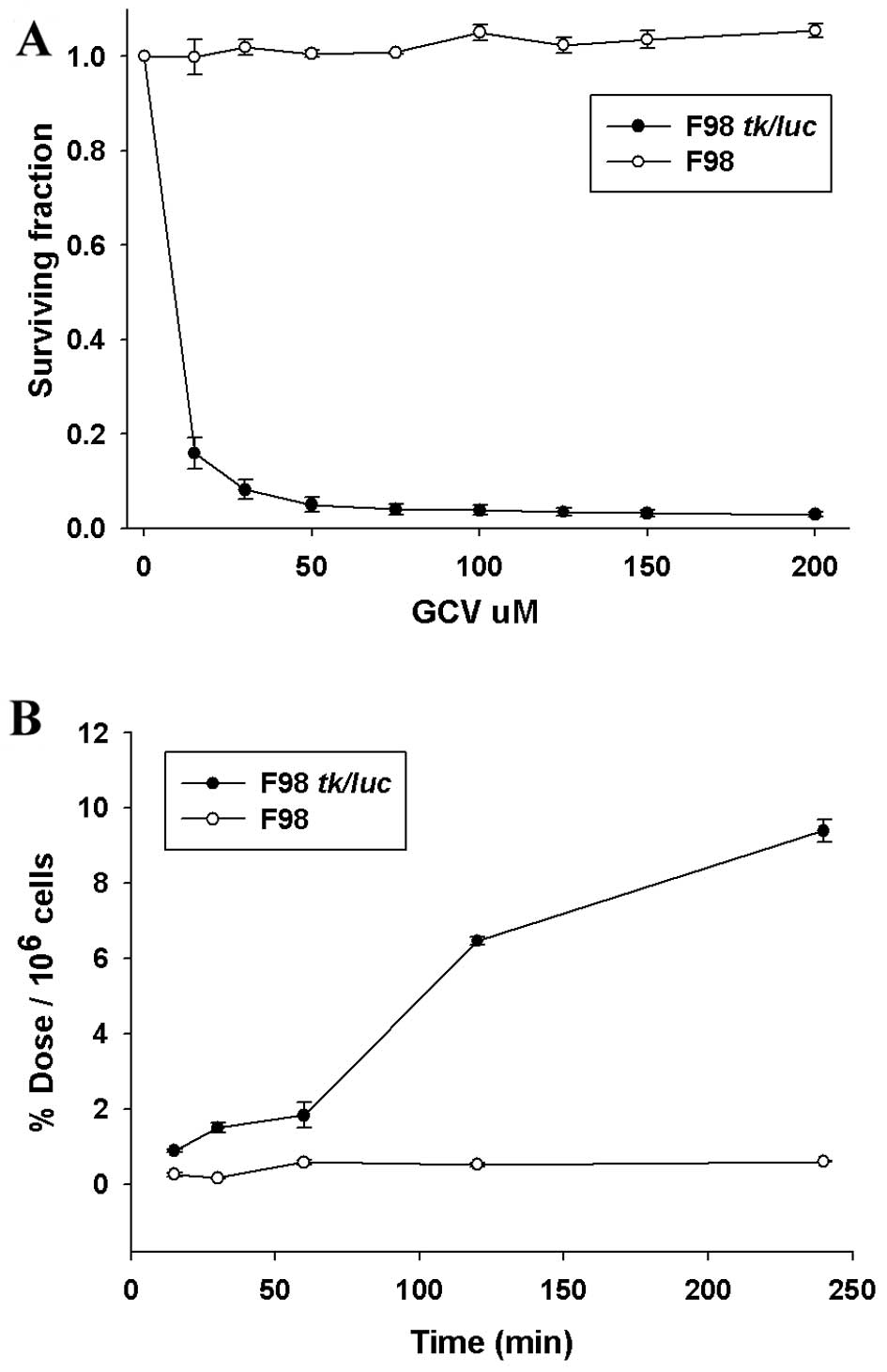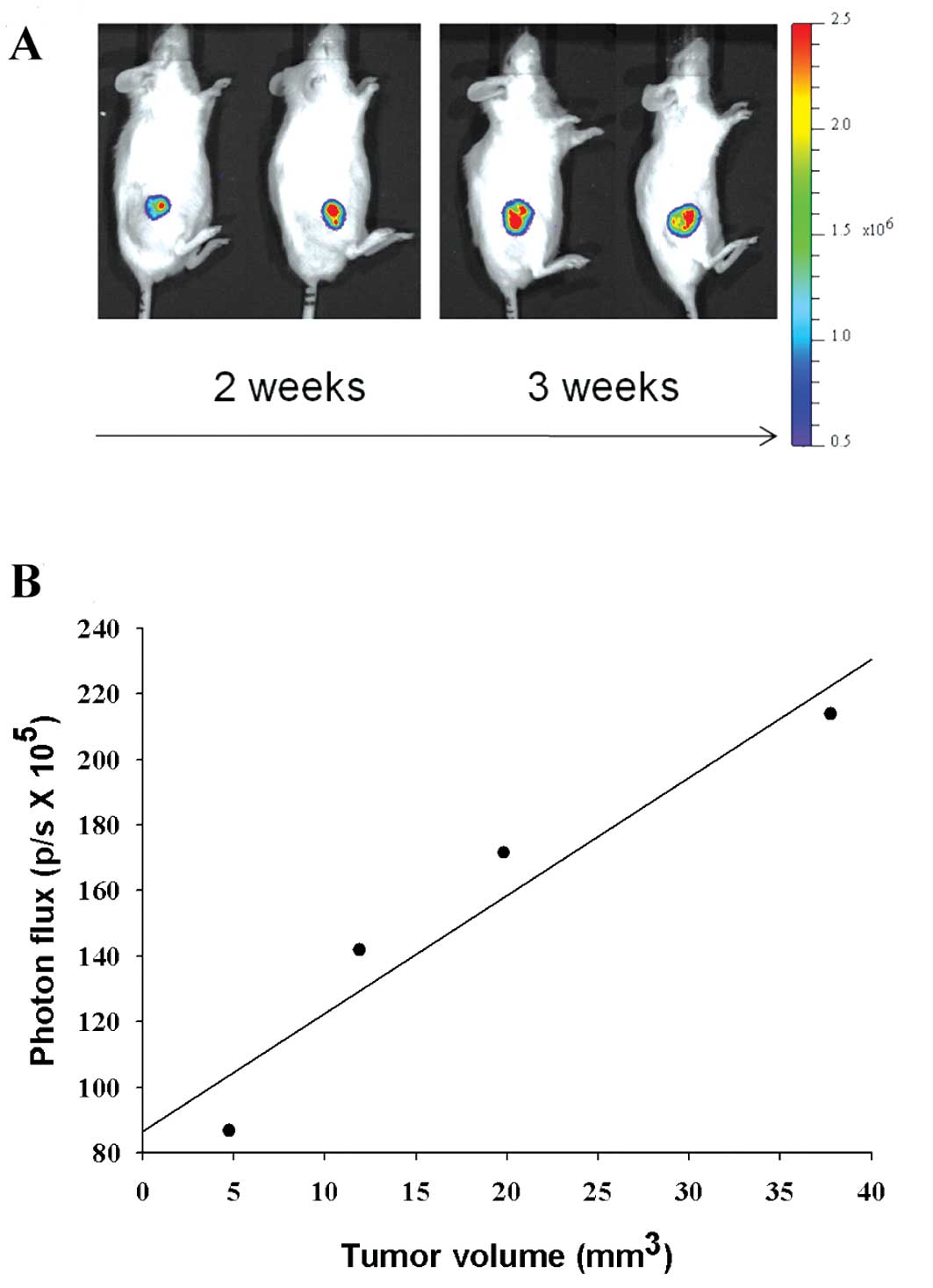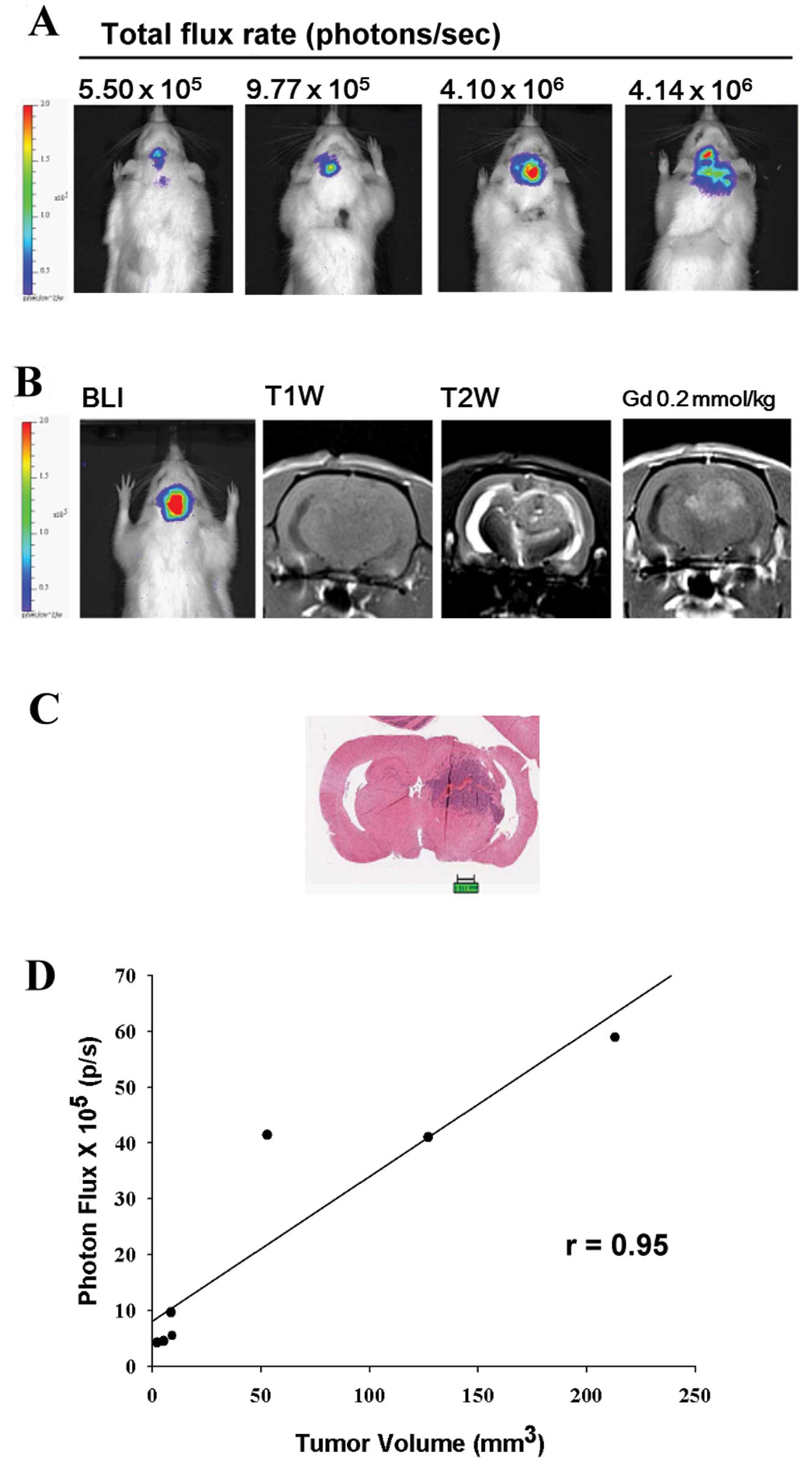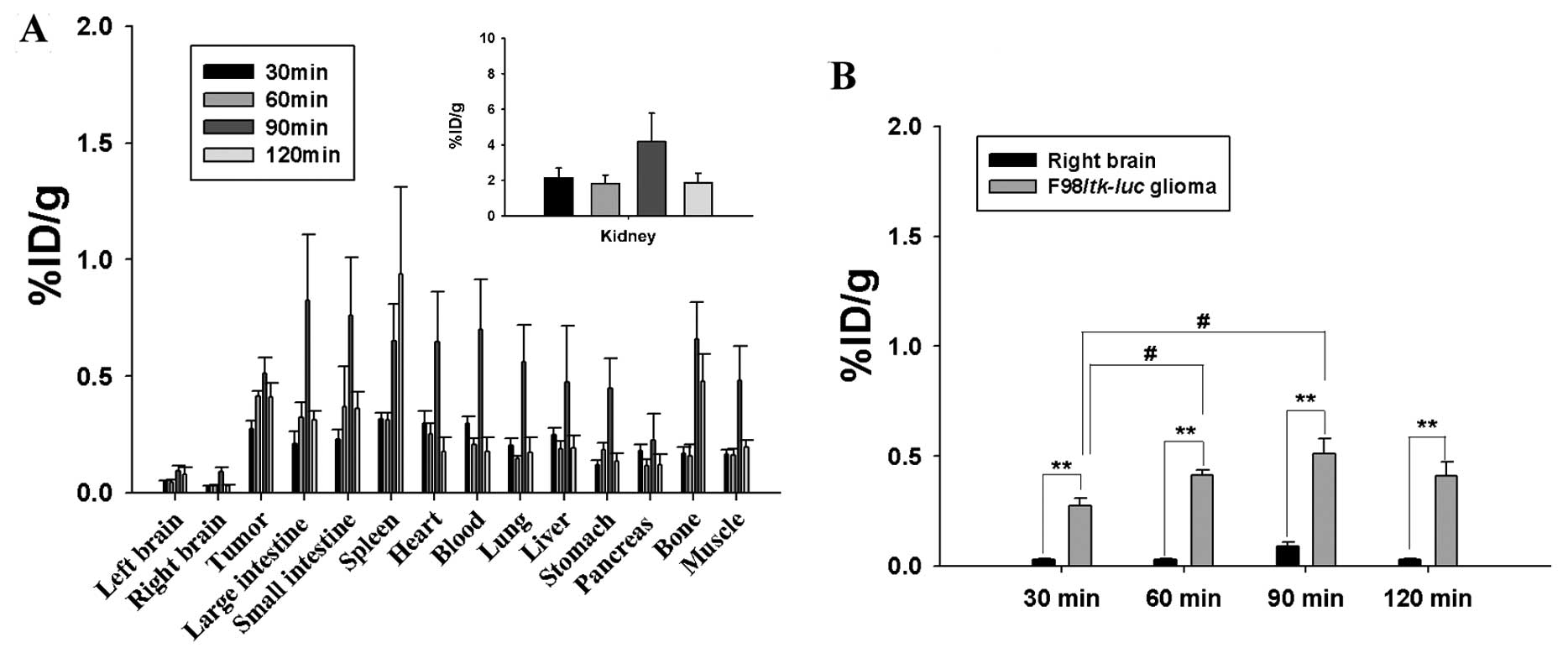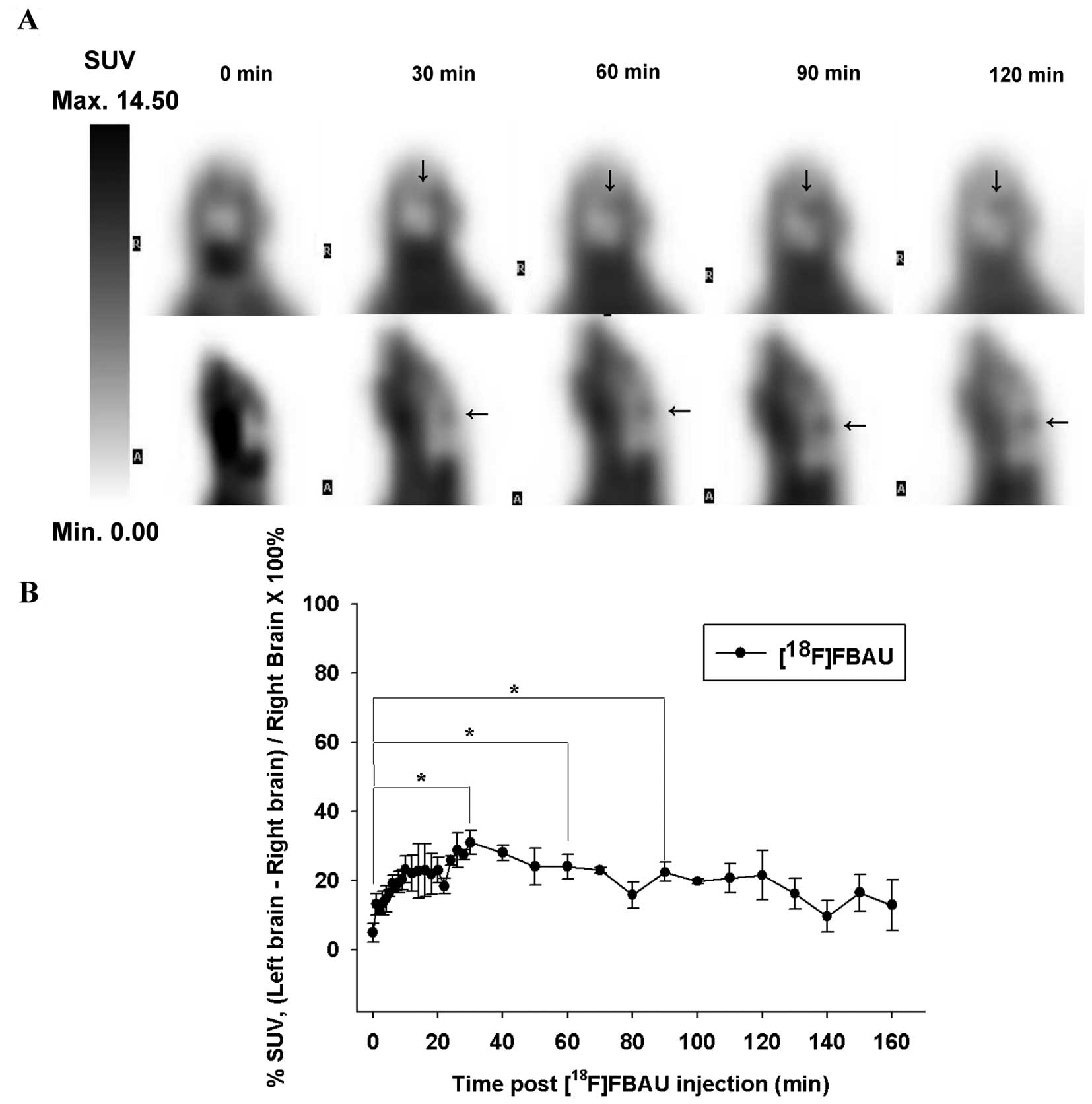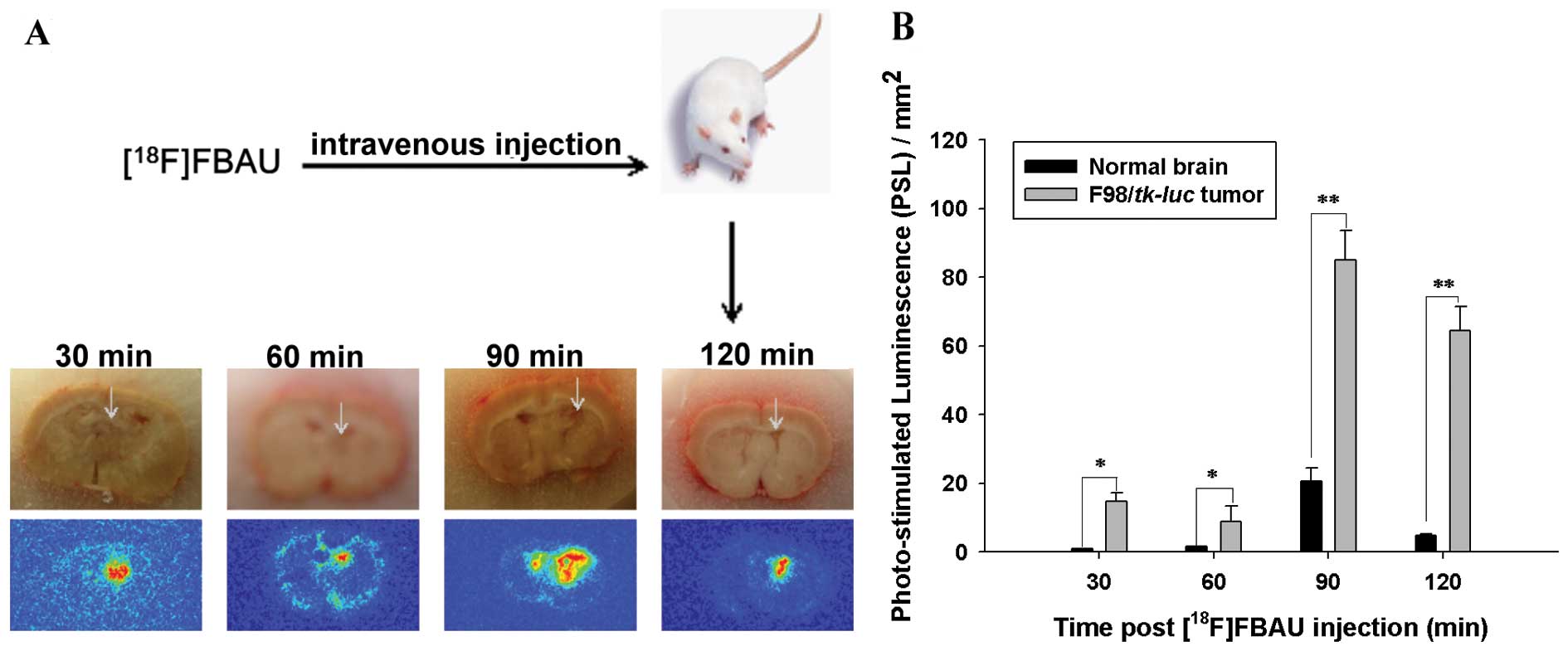|
1
|
Stupp R, Mason WP, van den Bent MJ, et al:
Radiotherapy plus concomitant and adjuvant temozolomide for
glioblastoma. N Engl J Med. 352:987–996. 2005. View Article : Google Scholar : PubMed/NCBI
|
|
2
|
Sathornsumetee S and Rich JN: Designer
therapies for glioblastoma multiforme. Ann NY Acad Sci.
1142:108–132. 2008. View Article : Google Scholar : PubMed/NCBI
|
|
3
|
Clarke J, Butowski N and Chang S: Recent
advances in therapy for glioblastoma. Arch Neurol. 67:279–283.
2010. View Article : Google Scholar
|
|
4
|
Huang FY, Lee TW, Kao CH, et al: Imaging,
autoradiography, and biodistribution of 188Re-labeled
PEGylated nanoliposome in orthotopic glioma bearing rat model.
Cancer Biother Radiopharm. 26:717–725. 2011.PubMed/NCBI
|
|
5
|
Miyata S, Kawabata S, Hiramatsu R, et al:
Computed tomography imaging of transferrin targeting liposomes
encapsulating both boron and iodine contrast agents by
convection-enhanced delivery to F98 rat glioma for boron neutron
capture therapy. Neurosurgery. 68:1380–1387. 2011.
|
|
6
|
Wolburg H, Wolburg-Buchholz K, Kraus J, et
al: Localization of claudin-3 in tight junctions of the blood-brain
barrier is selectively lost during experimental autoimmune
encephalomyelitis and human glioblastoma multiforme. Acta
Neuropathol. 105:586–592. 2003.
|
|
7
|
Valk PE, Townsend DW and Maisey MN:
Positron Emission Tomography: Basic Science and Clinical Practice.
Springer-Verlag Publishing; New York, NY: 2003
|
|
8
|
Strauss LG: Fluorine-18 deoxyglucose and
false-positive results: a major problem in the diagnostics of
oncological patients. Eur J Nucl Med. 23:1409–1415. 1996.
View Article : Google Scholar : PubMed/NCBI
|
|
9
|
Kong XB, Zhu QY, Vidal PM, et al:
Comparisons of anti-human immunodeficiency virus activities,
cellular transport, and plasma and intracellular pharmacokinetics
of 3′-fluoro-3′-deoxythymidine and 3′-azido-3′-deoxythymidine.
Antimicrob Agents Chemother. 36:808–818. 1992.PubMed/NCBI
|
|
10
|
Jensen MM, Erichsen KD, Johnbeck CB, et
al: [18F]FLT and [18F]FDG PET for
non-invasive treatment monitoring of the nicotinamide
phosphoribosyltransferase inhibitor APO866 in human xenografts.
PLoS One. 8:e534102013.
|
|
11
|
Tjuvajev JG, Stockhammer G, Desai R, et
al: Imaging the expression of transfected genes in vivo.
Cancer Res. 55:6126–6132. 1995.PubMed/NCBI
|
|
12
|
Tjuvajev JG, Finn R, Watanabe K, et al:
Noninvasive imaging of herpes virus thymidine kinase gene transfer
and expression: a potential method for monitoring clinical gene
therapy. Cancer Res. 56:4087–4095. 1996.PubMed/NCBI
|
|
13
|
Borbath I, Gregoire V, Bergstrom M, Laryea
D, Langstrom B and Pauwels S: Use of
5-[76Br]bromo-2′-fluoro-2′-deoxyuridine as a ligand for
tumour proliferation: validation in an animal tumour model. Eur J
Nucl Med Mol Imaging. 29:19–27. 2002.
|
|
14
|
Cho SY, Ravasi L, Szajek LP, et al:
Evaluation of 76Br-FBAU as a PET reporter probe for
HSV1-tk gene expression imaging using mouse models of human glioma.
J Nucl Med. 46:1923–1930. 2005.
|
|
15
|
Kilbourn MR, Dence CS, Welch MJ and
Mathias CJ: Fluorine-18 labeling of proteins. J Nucl Med.
28:462–470. 1987.PubMed/NCBI
|
|
16
|
Gambhir SS, Barrio JR, Herschman HR and
Phelps ME: Assays for noninvasive imaging of reporter gene
expression. Nucl Med Biol. 26:481–490. 1999. View Article : Google Scholar : PubMed/NCBI
|
|
17
|
Jacobs AH, Li H, Winkeler A, et al:
PET-based molecular imaging in neuroscience. Eur J Nucl Med Mol
Imaging. 30:1051–1065. 2003. View Article : Google Scholar : PubMed/NCBI
|
|
18
|
Pan MH, Huang SC, Liao YP, et al: FLT-PET
imaging of radiation responses in murine tumors. Mol Imaging Biol.
10:325–334. 2008. View Article : Google Scholar : PubMed/NCBI
|
|
19
|
Wang HE, Liao AH, Deng WP, et al:
Evaluation of
4-borono-2-18F-fluoro-L-phenylalanine-fructose as a
probe for boron neutron capture therapy in a glioma-bearing rat
model. J Nucl Med. 45:302–308. 2004.
|
|
20
|
Wang HE, Wu SY, Chang CW, et al:
Evaluation of F-18-labeled amino acid derivatives and
[18F]FDG as PET probes in a brain tumor-bearing animal
model. Nucl Med Biol. 32:367–375. 2005.
|
|
21
|
Massoud TF and Gambhir SS: Molecular
imaging in living subjects: seeing fundamental biological processes
in a new light. Genes Dev. 17:545–580. 2003. View Article : Google Scholar : PubMed/NCBI
|
|
22
|
De A, Lewis XZ and Gambhir SS: Noninvasive
imaging of lentiviral-mediated reporter gene expression in living
mice. Mol Ther. 7:681–691. 2003. View Article : Google Scholar : PubMed/NCBI
|
|
23
|
Bryant MJ, Chuah TL, Luff J, Lavin MF and
Walker DG: A novel rat model for glioblastoma multiforme using a
bioluminescent F98 cell line. J Clin Neurosci. 15:545–551. 2008.
View Article : Google Scholar : PubMed/NCBI
|
|
24
|
Chang YL, Wang HE, Liu RS, Pang F and
Hwang JJ: Monitoring of tumor growth and metastasis potential in
MDA-MB-435s/tk-luc human breast cancer xenografts. Nucl Instrum
Meth A. 571:155–159. 2007. View Article : Google Scholar
|
|
25
|
Deng WP, Yang WK, Lai WF, et al:
Non-invasive in vivo imaging with radiolabelled FIAU for monitoring
cancer gene therapy using herpes simplex virus type 1 thymidine
kinase and ganciclovir. Eur J Nucl Med Mol Imaging. 31:99–109.
2004. View Article : Google Scholar : PubMed/NCBI
|
|
26
|
Alauddin MM, Shahinian A, Park R, Tohme M,
Fissekis JD and Conti PS: A general synthesis of
2′-deoxy-2′-[18F]fluoro-5-methyl-1-β-D-arabinofuranosyluracil
and its 5-substituted nucleosides. J Labelled Compds Radiopharm.
46:285–289. 2003.
|
|
27
|
Kao CH, Xie HL, Liao CH, Chen WM and Kao
PF: [18F]FBAU 3′,5′-dibenzoate, a lipophilic prodrug,
enhances brain uptake of the cell proliferation tracer
[18F]FBAU. Nucl Med Biol. 35:635–643. 2008.
|
|
28
|
Engelhorn T, Eyupoglu IY, Schwarz MA, et
al: In vivo micro-CT imaging of rat brain glioma: a comparison with
3T MRI and histology. Neurosci Lett. 458:28–31. 2009. View Article : Google Scholar : PubMed/NCBI
|
|
29
|
Lin C, Itti E, Haioun C, et al: Early
18F-FDG PET for prediction of prognosis in patients with
diffuse large B-cell lymphoma: SUV-based assessment versus visual
analysis. J Nucl Med. 48:1626–1632. 2007.
|
|
30
|
Tjuvajev JG, Avril N, Oku T, et al:
Imaging herpes virus thymidine kinase gene transfer and expression
by positron emission tomography. Cancer Res. 58:4333–4341.
1998.PubMed/NCBI
|
|
31
|
Fu DX, Foss CA, Nimmagadda S, Ambinder RF
and Pomper MG: Imaging virus-associated cancer. Curr Pharm Des.
14:3048–3065. 2008. View Article : Google Scholar : PubMed/NCBI
|
|
32
|
Miyagawa T, Gogiberidze G, Serganova I, et
al: Imaging of HSV-tk reporter gene expression: comparison
between [18F]FEAU, [18F]FFEAU, and other
imaging probes. J Nucl Med. 49:637–648. 2008.
|
|
33
|
Buursma AR, Rutgers V, Hospers GA, Mulder
NH, Vaalburg W and de Vries EF: 18F-FEAU as a
radiotracer for herpes simplex virus thymidine kinase gene
expression: in-vitro comparison with other PET tracers. Nucl Med
Commun. 27:25–30. 2006. View Article : Google Scholar
|
|
34
|
Rehemtulla A, Stegman LD, Cardozo SJ, et
al: Rapid and quantitative assessment of cancer treatment response
using in vivo bioluminescence imaging. Neoplasia. 2:491–495. 2000.
View Article : Google Scholar : PubMed/NCBI
|
|
35
|
Jost SC, Collins L, Travers S,
Piwnica-Worms D and Garbow JR: Measuring brain tumor growth:
combined bioluminescence imaging-magnetic resonance imaging
strategy. Mol Imaging. 8:245–253. 2009.PubMed/NCBI
|
|
36
|
Song HT, Jordan EK, Lewis BK, et al: Rat
model of metastatic breast cancer monitored by MRI at 3 tesla and
bioluminescence imaging with histological correlation. J Transl
Med. 7:882009. View Article : Google Scholar : PubMed/NCBI
|
|
37
|
Spaeth N, Wyss MT, Pahnke J, et al: Uptake
of 18F-fluorocholine,
18F-fluoro-ethyl-L-tyrosine and
18F-fluoro-2-deoxyglucose in F98 gliomas in the rat. Eur
J Nucl Med Mol Imaging. 33:673–682. 2006.
|















